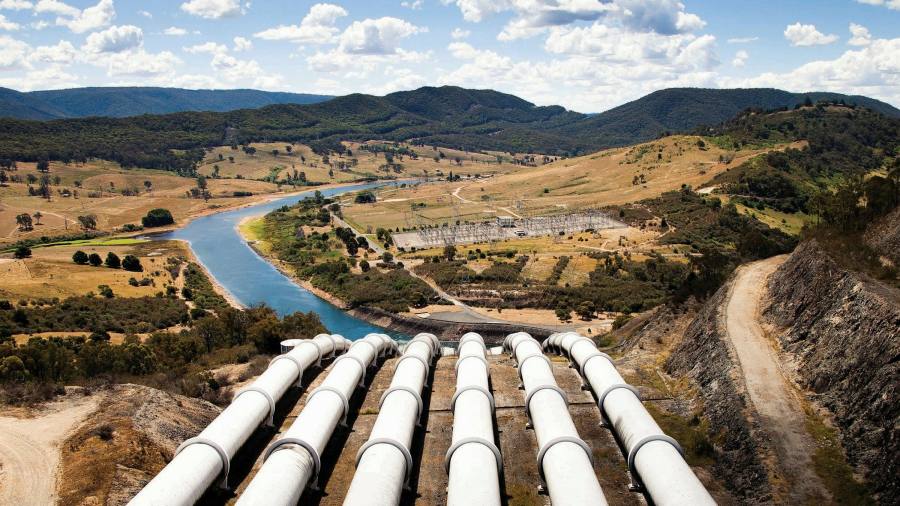[ad_1]
The writer is the former prime minister of Australia
Covid-19 has revealed many truths about the transition to low-carbon energy. First, if we can put our collective minds to a problem as complex as vaccine development, we can do the same to address climate change. As Bill Gates said last month, solving climate change would be “the most amazing thing humanity has ever doneâ€.
Second, wide fluctuations in energy supply and demand due to lockdowns have shown that we cannot rely only on increasing shares of variable renewables, such as wind and solar, to provide power when it is urgently needed. This summer saw rolling blackouts in California when a lack of flexible generation meant excess demand couldn’t be met — although officials insisted that solar and wind were not to blame.
Following a statewide blackout in South Australia in 2016 it became obvious that we would need large-scale, long-term energy storage to back up the electricity supply from variable renewables. It was a choice between a low-carbon hydro solution or coal or gas. So, in 2017, I announced that we would make pumped storage hydropower a national priority, starting with the 2GW Snowy Hydro 2.0 project. When complete in 2025 it will be the largest energy storage facility in the southern hemisphere.
When thinking about electricity storage, most people think of lithium-ion batteries. However, over 90 per cent of the world’s electricity grid storage today is in the form of pumped storage hydropower. It has had a crucial role in keeping electricity flowing during the pandemic. Pumped storage stations have been hailed as the “first line of defence in the battle to keep Britain’s lights on†during the coronavirus crisis. They also helped prevent a large-scale blackout in Europe in January after the Croatian grid was overloaded.
Pumped storage hydropower operates on a simple but effective premise. At times of excess electricity supply, water is pumped up a hill into a reservoir. Then, in times of need, it is released on demand to drive turbines and provide near instantaneous energy to the grid. It is a proven, low-cost, long duration storage technology that can operate for decades.
Twice weekly newsletter

Energy is the world’s indispensable business and Energy Source is its newsletter. Every Tuesday and Thursday, direct to your inbox, Energy Source brings you essential news, forward-thinking analysis and insider intelligence. Sign up here.
Furthermore, there is plenty of potential for it, even without building new dams; all that’s needed is two connected reservoirs at different elevations. The Australian National University has identified over 600,000 potential off-river sites globally. Uphill pumping can also be enabled between connected reservoirs, as we are doing with Snowy 2.0. And there are opportunities to use old mines, as is being done in Queensland, or in building reservoirs on escarpments adjacent to seawater.
However, despite being a proven technology, developers around the world are struggling to get new projects off the ground. The frameworks that enabled pumped storage in the past — vertically integrated and often state-owned utilities — have given way to deregulated markets that do not provide revenue certainty to support this level of investment in infrastructure.
At the end of 2019, the global development pipeline included nearly 300 PSH projects, with a total planned capacity of well over 200GW. However, only 50 of these, with a capacity of 53GW, are actually under construction. The vast majority (47GW) are in China.
Low-carbon infrastructure with significant upfront costs needs to be incentivised by governments with suitable de-risking mechanisms for investors. The UK’s Contracts for Difference is one example of this. It is successfully delivering offshore wind at a significant scale and a low cost to consumers that was previously inconceivable.
Climate Capital

Where climate change meets business, markets and politics. Explore the FT’s coverage hereÂ
The International Forum on Pumped Storage Hydropower, which I co-chair with the US Department of Energy, brings together experts to provide clear policy and market design recommendations to help ensure that essential grid services, such as pumped storage, will be available as we phase out carbon-intensive fossil fuels.Â
The cost of solar and wind energy is dropping all the time, and it is getting faster to deploy. But there is a real risk that storage capabilities will not keep up with renewable generation. It takes less than a year to build a solar farm. A pumped hydro system takes much longer because of the civil works and environmental issues, so governments have to plan ahead.
We have to start building the storage capabilities to make renewables reliable and until green hydrogen is widely available and affordable, pumped hydro is the best solution. If we don’t get the frameworks right to enable a rapid deployment of pumped storage, there is a real risk that decarbonisation will stall, just as it needs to accelerate.
[ad_2]
Source link





